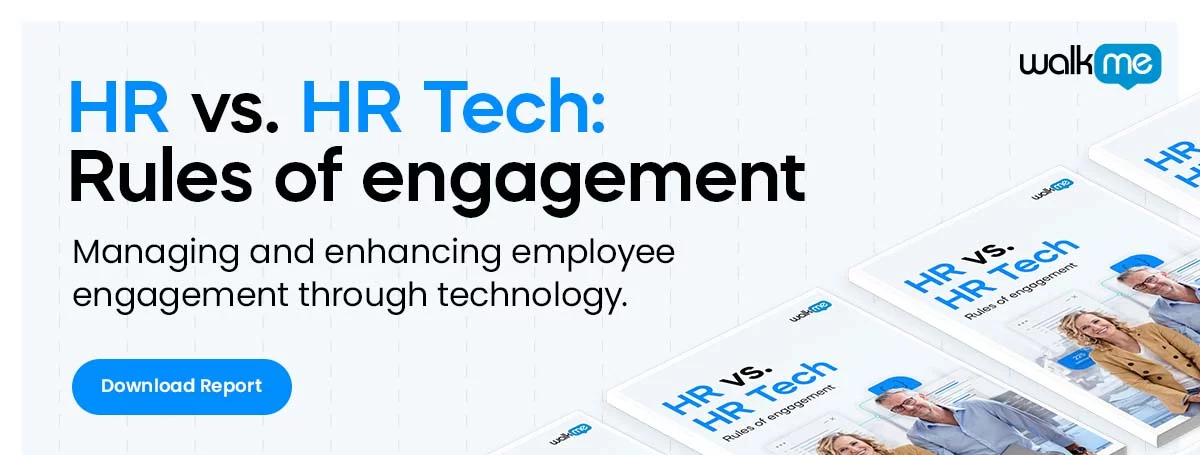
What is employee offboarding and what are the most important departing employee procedures?
While the answer may be up for some debate, what isn’t up for debate is the importance of employee offboarding. Below, we’ll find out why that is and which offboarding procedures are the most important.
What Does Employee Offboarding Mean?
Employee offboarding is a stage in the employee journey.
This journey includes stages such as:
- Employee onboarding
- Employee engagement
- Employee training
- Employee development
- Employee offboarding
Each stage of the journey should be a structured process with its own goals and objectives.
Employee offboarding, being the last stage, may seem less important than the others. Yet conducting a structured offboarding process definitely has its advantages.
Why Does Employee Offboarding Matter?
Onboarding can improve a number of metrics, such as time-to-competency, job satisfaction, and employee retention.
But why create a structured offboarding process?
After all, employees are leaving the organization, so what can be gained by structuring and measuring this process?
Several things:
- Through exit interviews, managers can better understand why the employee left and what can be done about it
- Creating an offboarding checklist can minimize the risks of forgetting something crucial
- A positive offboarding experience can leave employees with a good impression of the company, which can then leave the door open for a future relationship, word-of-mouth referrals, and so forth
In short, offboarding should do a couple of things – it should maintain a positive relationship with employees and it should perform logistical tasks, such as closing security holes.
What Are the Most Important Departing Employee Procedures?
These are some of the most common and important offboarding procedures to focus on:
Exit Interviews
An exit interview is, in essence, the opposite of a job interview.
Rather than interviewing employees about their qualifications, managers interview employees about their experience with a company.
Common exit interview questions focus on topics such as:
- Why the employee is leaving
- The quality of management
- The workplace and coworkers
- The quality of the employee training program
- The job and organizational culture fit
- What employees will do next
All of these questions, as mentioned, can offer very useful insights for managers and business leaders – if it is utilized.
For that reason, conducting an exit interview is only the first step. The next is to actually apply that information in a structured business performance improvement program.
Closing Security Holes
Security is another important consideration during employee offboarding.
Managers, IT staff, HR staff, security staff, and other relevant parties should therefore be included as needed.
Here are a few examples of security procedures to follow:
- Close IT accounts
- Change passwords
- Retrieve and invalidate ID cards
- Obtain keys
- Change keypad combinations
All of these security procedures should be performed as soon as possible, simply as a matter of protocol. After all, either intentional or accidental breaches could occur if these procedures aren’t followed – and in either case the result would be the same.
Returning Equipment
Another basic procedure to follow is returning equipment.
This can include:
- IT equipment
- Vehicles or machinery
- Tools
- POS equipment
- Uniforms
While basic, this is another important item to include on your checklist.
Saying Goodbye
Companies who want to leave a positive impression should consider social events or gestures, especially for those who have been with the company for a long time.
Not only does this demonstrate goodwill towards the employee, it is just common courtesy.
Examples of this include:
- Parties or social gatherings
- Goodbye cards
- Company-wide messages or emails
Acknowledging the employees’ hard work and service does several things. On the one hand, it keeps a positive tone to the relationship. On the other, it shows all employees – not just the departing employee – that the company appreciates their workforce.
These types of gestures ultimately help create a more positive workplace and, along with other factors, improve employer branding.
Knowledge Transfer
Employees gain skills, knowledge, and abilities during their time at the workplace.
If those skills aren’t preserved, then the organization is actually losing valuable assets when the employee departs.
To mitigate those losses, consider having the employee:
- Cross-train employees in their department
- Document their workflows, routines, and best practices
- Create software walkthroughs for their successors
If employees don’t pass along their knowledge to others, then new hires will have to start from scratch and learn from trial and error. Not only is that frustrating for new hires, it is a waste of the organization’s time and resources.
Administrative Details
Finally, an offboarding checklist needs to focus on the logistical activities of ending the employee’s tenure.
These include things such as:
- Finalizing paperwork
- Updating internal documents and databases
- Updating websites
- Informing other employees of the departure
Again, while some of these details may seem trivial, not performing them can lead to inefficiencies, employee frustration, and problems later on. HR managers should therefore delegate a point person to head up the departure process and create a comprehensive checklist that covers every base.
WalkMe Team
WalkMe spearheaded the Digital Adoption Platform (DAP) for associations to use the maximum capacity of their advanced resources. Utilizing man-made consciousness, AI, and context-oriented direction, WalkMe adds a powerful UI layer to raise the computerized proficiency, everything being equal.



